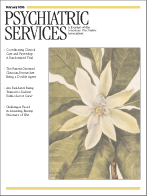The Development and Treatment of Girlhood Aggression
This edited volume offers current pioneering work on the development and consequences of aggression among girls. The purpose of the volume is to highlight current understanding, identify targets for treatment and prevention, and raise new questions about future research.
The book is organized into five sections, each with two research chapters and a concluding commentary chapter. This format is appealing, as commentators clarify the importance, similarities, or differences in findings as well as critique methods or interpretation. Each section includes a focus, developmental and measurement issues, physical aggression, social context, treatment aspects, and outcomes among young adults. There is also much overlap in the reported findings, which are, fortunately, largely congruent. Readers should note, however, that most of the studies were conducted in Canada.
Important findings that arose repeatedly include the fact that there are many similarities between the causes and nature of girls' and boys' aggression, but that there are important differences, including the social nature and consequences of girlhood aggression and the relationship of aggressive adolescent girls to boys. Various authors provide compelling evidence that physical aggression among girls, although less prevalent than among boys, has serious consequences—for example, teen pregnancy, school failure, unemployment, and relational violence. The final chapters, emphasizing young adult functioning, particularly as it relates to parenting the next generation, provides some of the most compelling reasons for expanded research in this area.
Some of the most intriguing chapters include the finding, by Baillargeon and colleagues, that physical aggression, when carefully measured on the basis of concretely observable forms—for example, fighting, kicking, and biting—evidences gender differences as early as ages 2 and 3 years. The chapter by Xie and colleagues offers a thorough discussion of measures and definitions of social aggression, which is consistently more common among girls than boys. However, although these and other authors submit that it is also important to reduce social aggression, they fail to demonstrate its impact on either the perpetrator or the victim and, in fact, provide data suggesting that socially aggressive girls are educationally more successful. One of the most easily read and intriguing chapters is by Artz, who describes themes that have emerged from her qualitative study of violent adolescent girls in Vancouver, British Columbia. She concludes that the most violent girls are caught in a trap of seeking to ally with those they perceive as being in power—namely, males. These girls resort to violence to protect their reputations and their romantic or sexual relationships and define their own worth primarily in terms of their ability to attract male peers. Finally, the chapter by Stack and associates on girls' aggression across the life course provides compelling evidence about the link of girlhood aggression, through complex pathways, to poor as well as adequate parenting. Of particular interest is the finding that although girlhood aggression was found to predict numerous subsequent difficulties, the group at the highest risk was girls who were highly aggressive and socially withdrawn.
Overall, this is a very useful and thought-provoking book for both clinicians and researchers.
Dr. Davis is assistant professor in the center for mental health services research of the department of psychiatry at the University of Massachusetts Medical School in Worcester.



